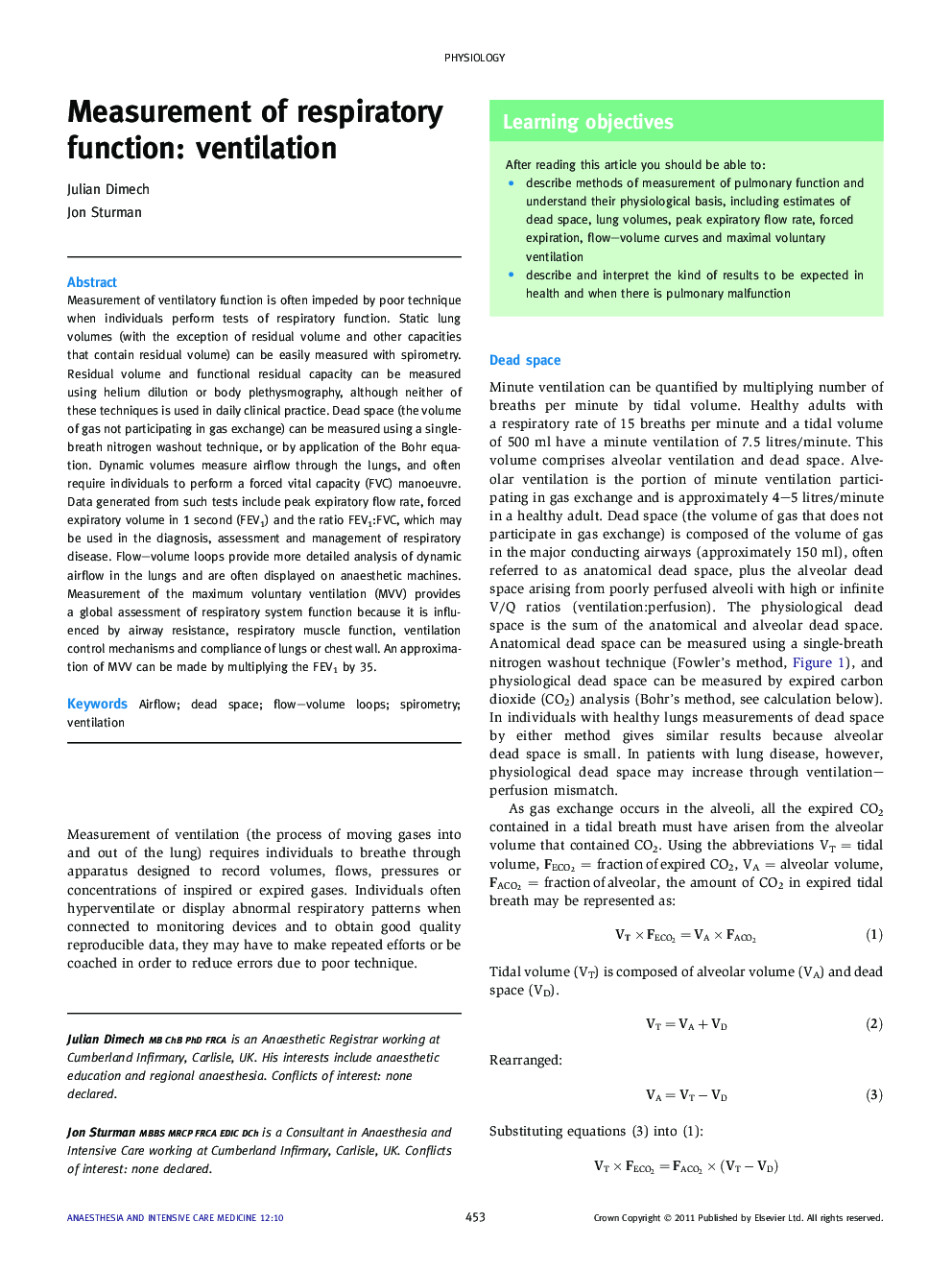| کد مقاله | کد نشریه | سال انتشار | مقاله انگلیسی | نسخه تمام متن |
|---|---|---|---|---|
| 2742843 | 1148633 | 2011 | 5 صفحه PDF | دانلود رایگان |
عنوان انگلیسی مقاله ISI
Measurement of respiratory function: ventilation
دانلود مقاله + سفارش ترجمه
دانلود مقاله ISI انگلیسی
رایگان برای ایرانیان
کلمات کلیدی
موضوعات مرتبط
علوم پزشکی و سلامت
پزشکی و دندانپزشکی
بیهوشی و پزشکی درد
پیش نمایش صفحه اول مقاله

چکیده انگلیسی
Measurement of ventilatory function is often impeded by poor technique when individuals perform tests of respiratory function. Static lung volumes (with the exception of residual volume and other capacities that contain residual volume) can be easily measured with spirometry. Residual volume and functional residual capacity can be measured using helium dilution or body plethysmography, although neither of these techniques is used in daily clinical practice. Dead space (the volume of gas not participating in gas exchange) can be measured using a single-breath nitrogen washout technique, or by application of the Bohr equation. Dynamic volumes measure airflow through the lungs, and often require individuals to perform a forced vital capacity (FVC) manoeuvre. Data generated from such tests include peak expiratory flow rate, forced expiratory volume in 1 second (FEV1) and the ratio FEV1:FVC, which may be used in the diagnosis, assessment and management of respiratory disease. Flow-volume loops provide more detailed analysis of dynamic airflow in the lungs and are often displayed on anaesthetic machines. Measurement of the maximum voluntary ventilation (MVV) provides a global assessment of respiratory system function because it is influenced by airway resistance, respiratory muscle function, ventilation control mechanisms and compliance of lungs or chest wall. An approximation of MVV can be made by multiplying the FEV1 by 35.
ناشر
Database: Elsevier - ScienceDirect (ساینس دایرکت)
Journal: Anaesthesia & Intensive Care Medicine - Volume 12, Issue 10, October 2011, Pages 453-457
Journal: Anaesthesia & Intensive Care Medicine - Volume 12, Issue 10, October 2011, Pages 453-457
نویسندگان
Julian Dimech, Jon Sturman,